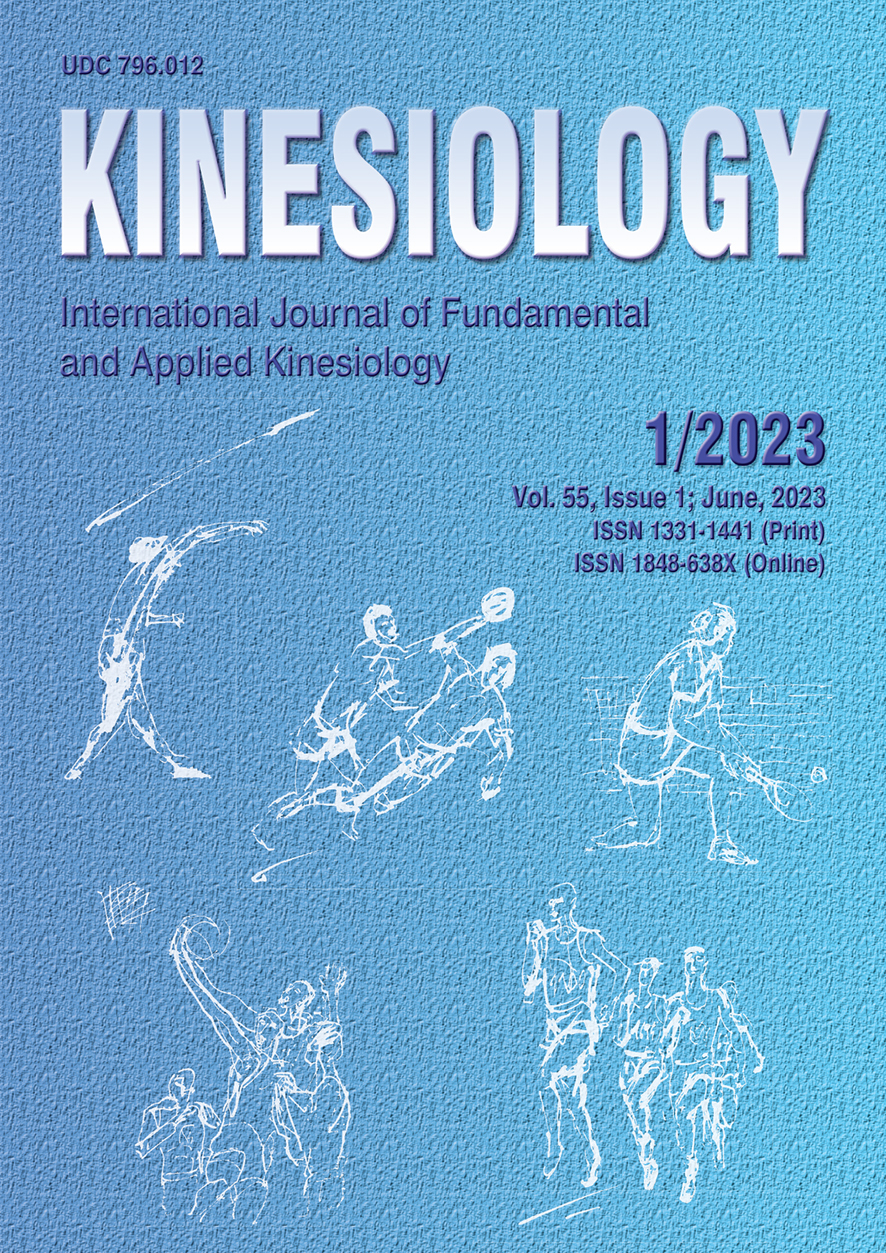PHYSICAL, PHYSIOLOGICAL DEMANDS AND MOVEMENT PROFILES OF PROFESSIONAL MEN’S FIELD HOCKEY GAMES
Abstract
The aim of this study was to investigate physical demands, physiological demands, and movement profiles of different positions across four quarters in professional men’s field hockey games. Eighteen professional male field hockey players participated in the study, and data were collected in eleven official matches. Players wore global positioning system units and heart rate monitors to collect physical, physiological, and movement profile data. Defenders had significantly higher absolute total distance covered, player load, acceleration and deceleration count, and forward-backward initial movement analysis (IMA) count, but lower high speed running distance, compared with midfielders and forwards (p<.05). However, when using relative metrics (normalised by playing time), defenders had the lowest physical and physiological outputs, and forwards had the highest (p<.05). Total distance covered per minute, high-speed running distance per minute, player load per minute, acceleration and deceleration count per minute, and repeated high-intensity efforts per minute were all significantly higher in quarter 1 than in other three quarters (p<.05). The percentages of linear running and non-linear dynamic movement duration decreased quarter by quarter. Modified training impulse per minute reached its peak in quarter 2 (p<.05). It was concluded that defenders had the highest volume in terms of the game demands due to their high playing minutes; however, they had the lowest relative volume compared with the other two positions. Forwards had the highest linear running intensity, while midfielders were required to perform more multi-directional, non-linear movements. Quarter 1 was the most active quarter and players became fatigued in quarter 2. IMA counts were not sensitive to fatigue compared to movement profile and modified training impulse variables.
Key words: GPS, activity profile, heart rate, team sports
Downloads
Published
How to Cite
Issue
Section
License

This work is licensed under a Creative Commons Attribution-NonCommercial 4.0 International License.
At Faculty of Kinesiology we recognize that access to quality research is vital to the scientific community and beyond. Kinesiology is non-profit journal and all costs of publishing and peer review process are covered by the publisher itself or other funding sources like Ministry of Science and Education of the Republic of Croatia. Full text papers are also available free of charge at http://hrcak.srce.hr/kineziologija. There are no restrictions on self archiving of any form of paper (preprint, postprint and publisher's version).
Articles are distributed under the terms of the CC BY - NC 4.0
Kinesiology does not charge any fees to authors to submit or publish articles in our journal.


